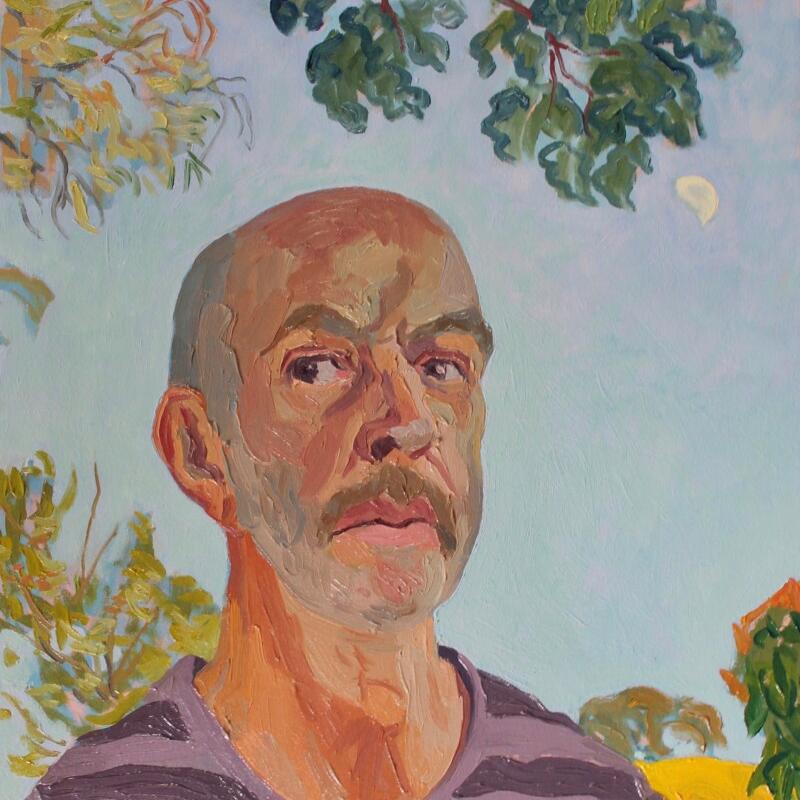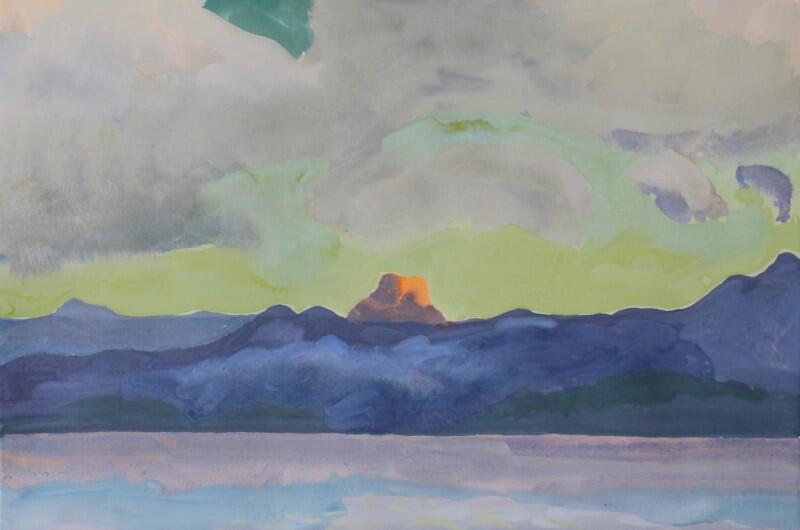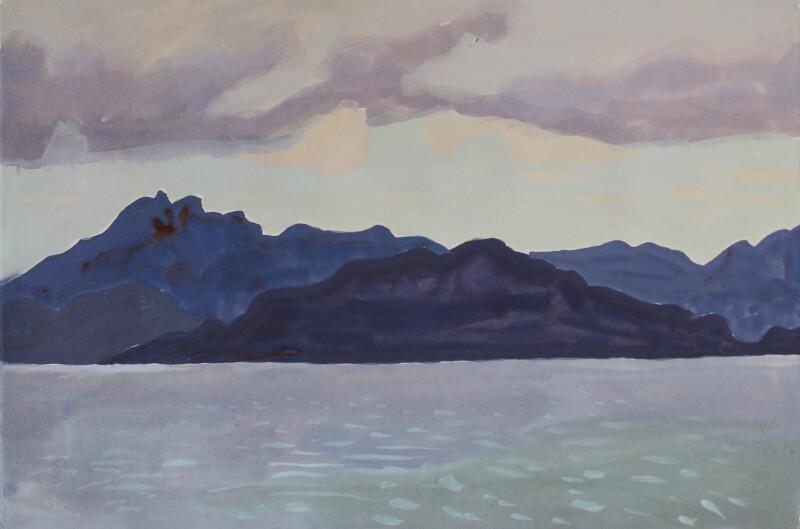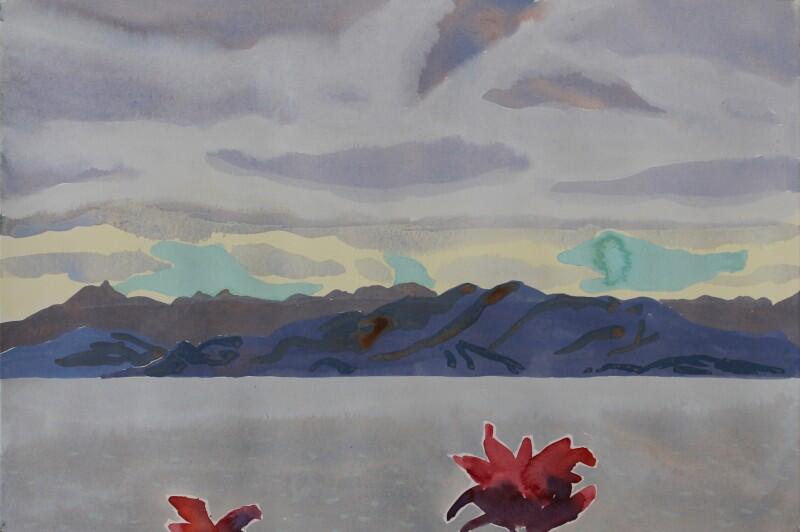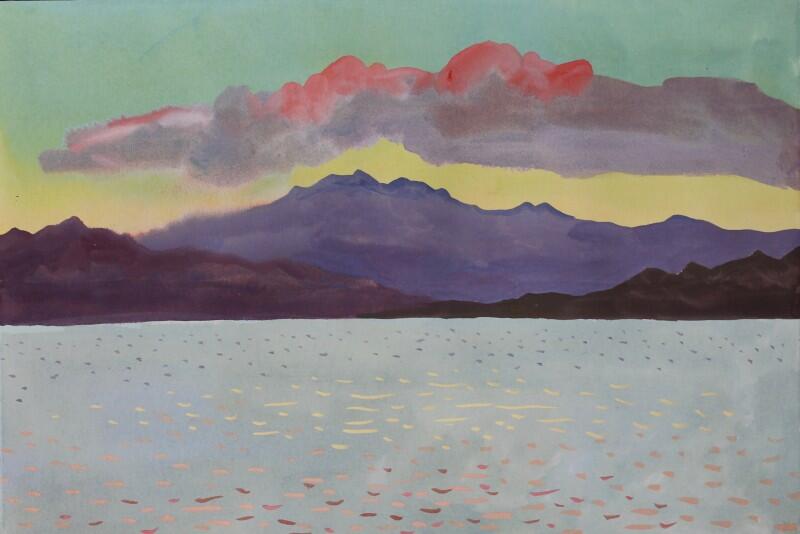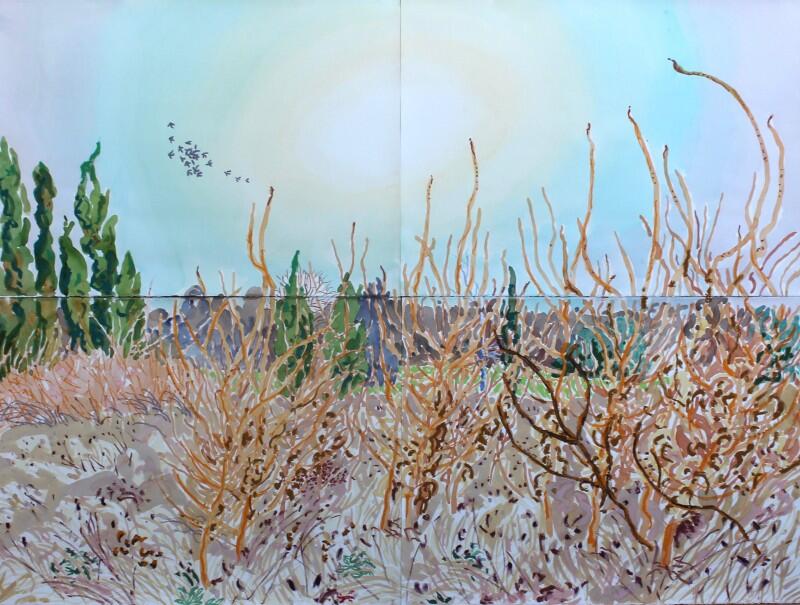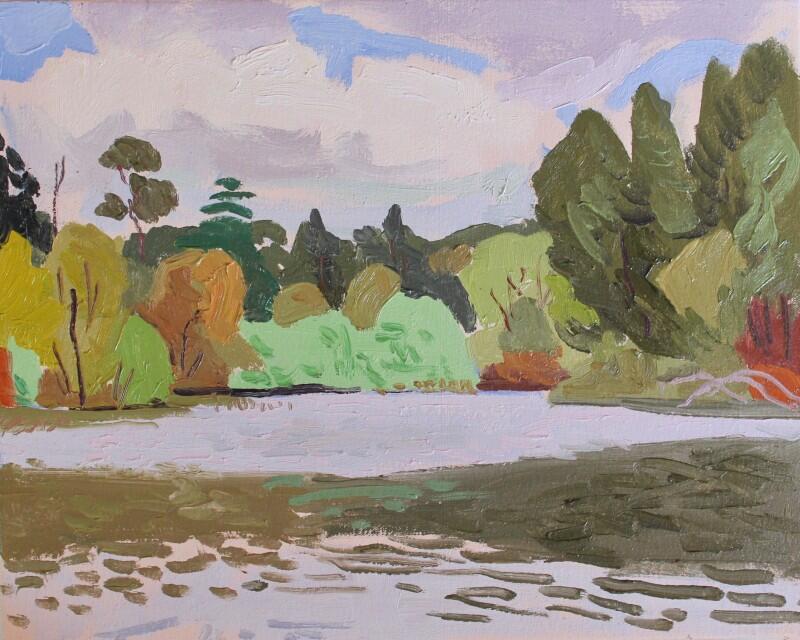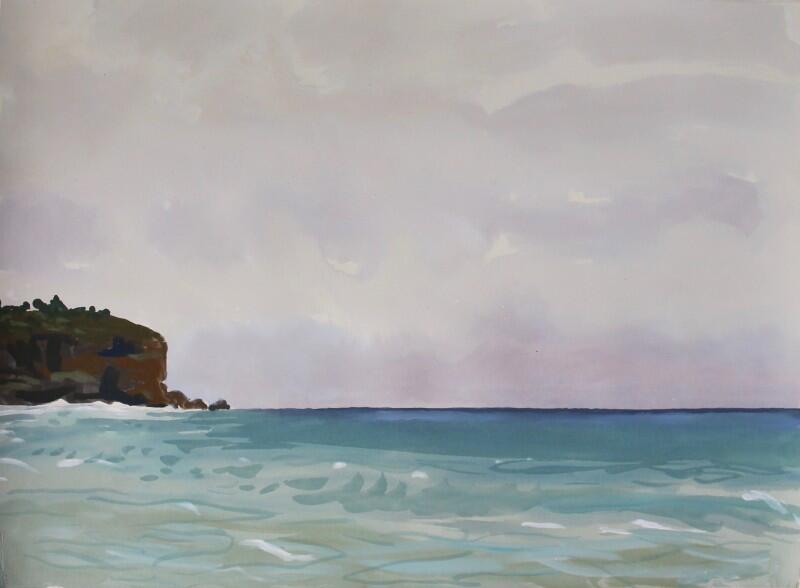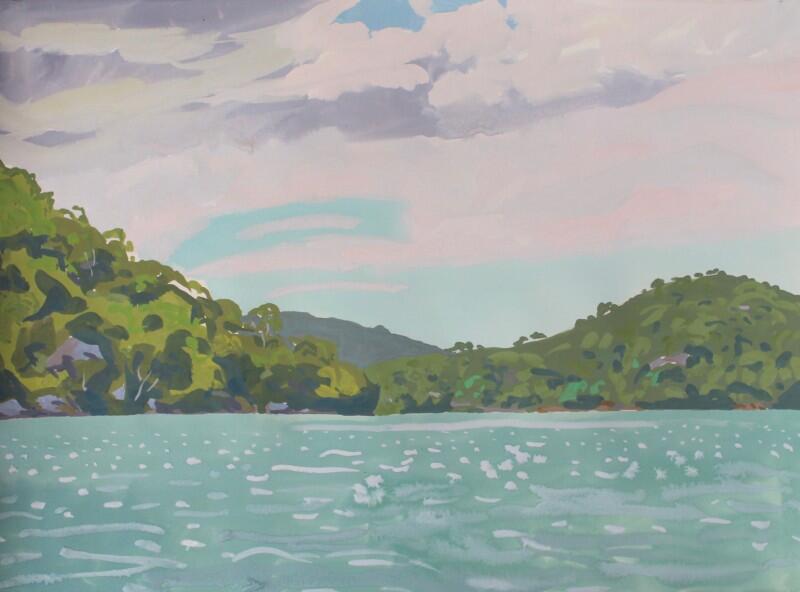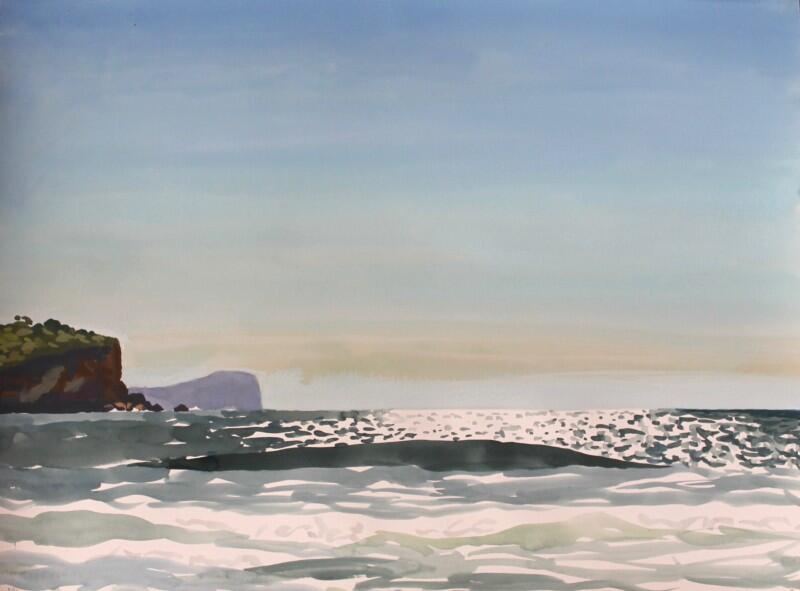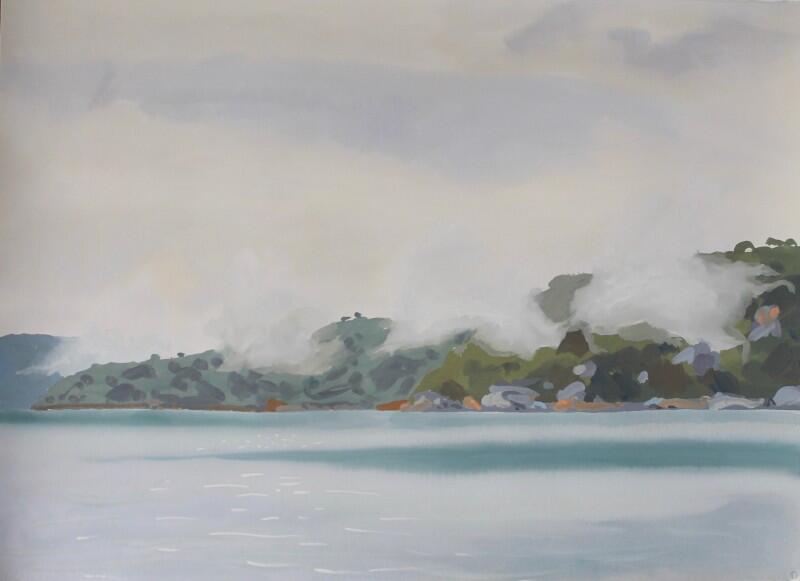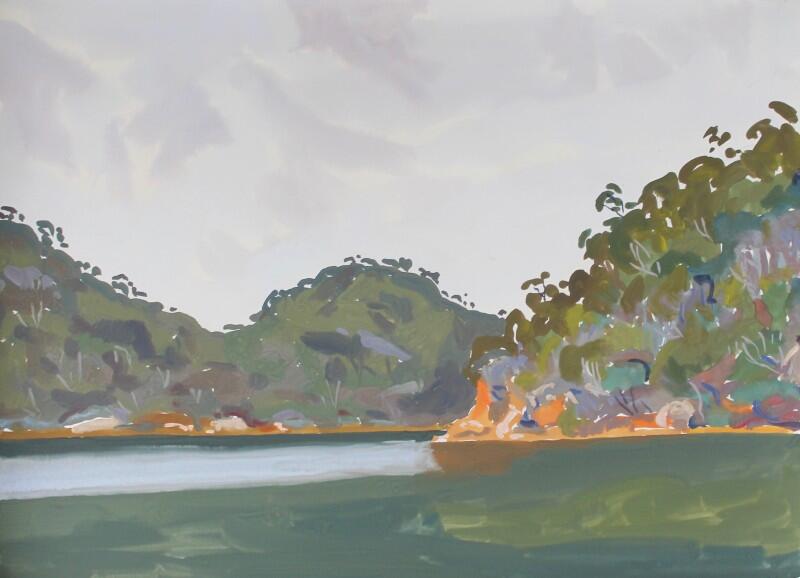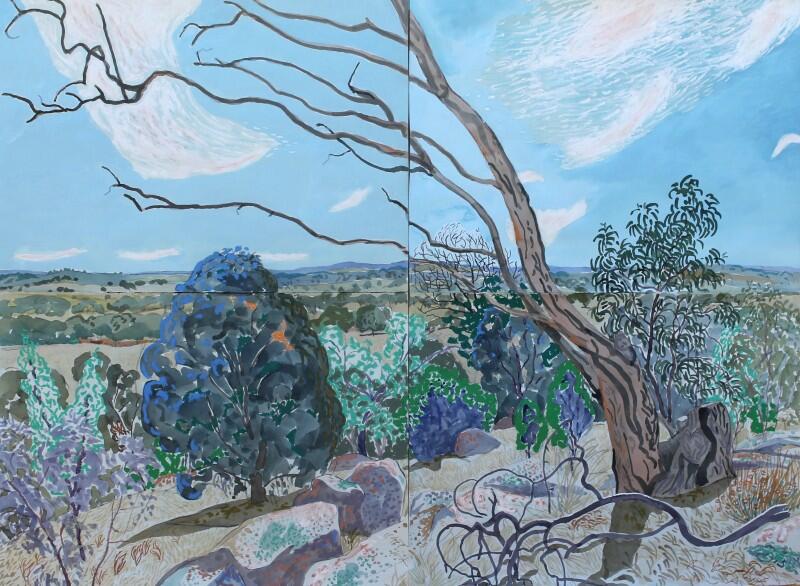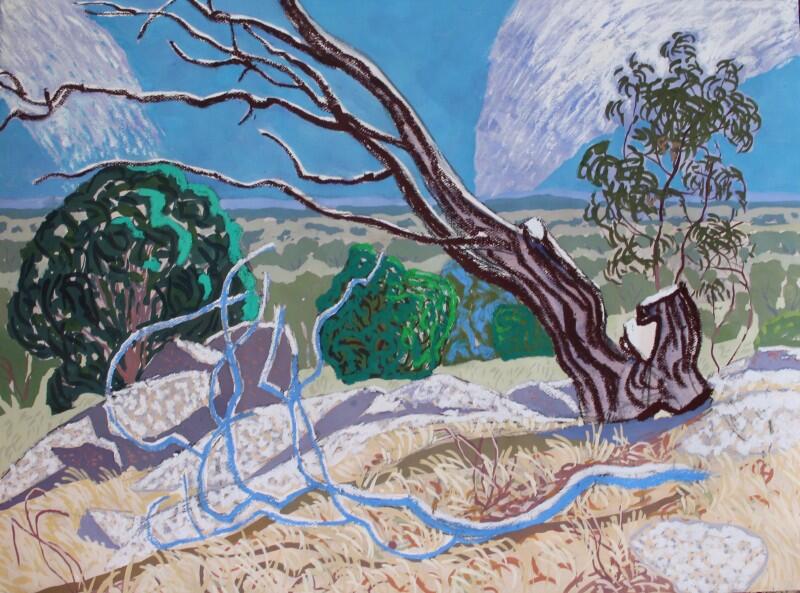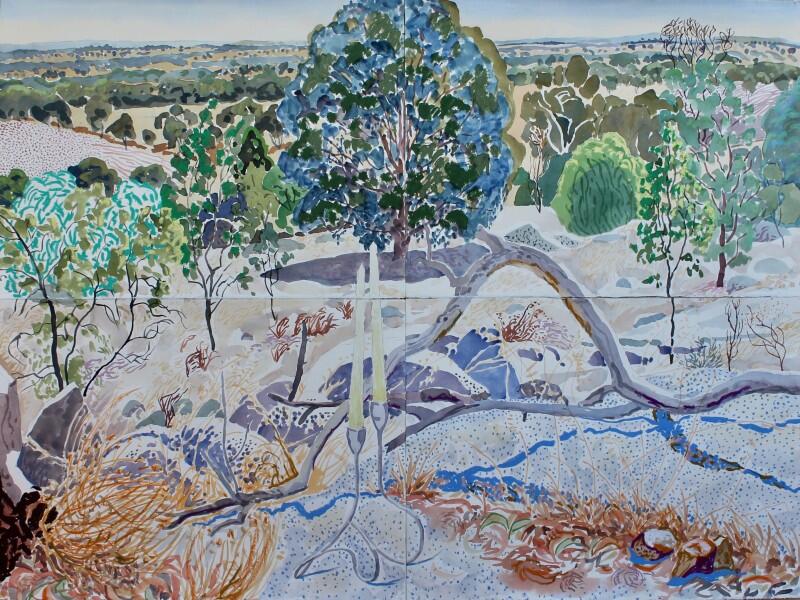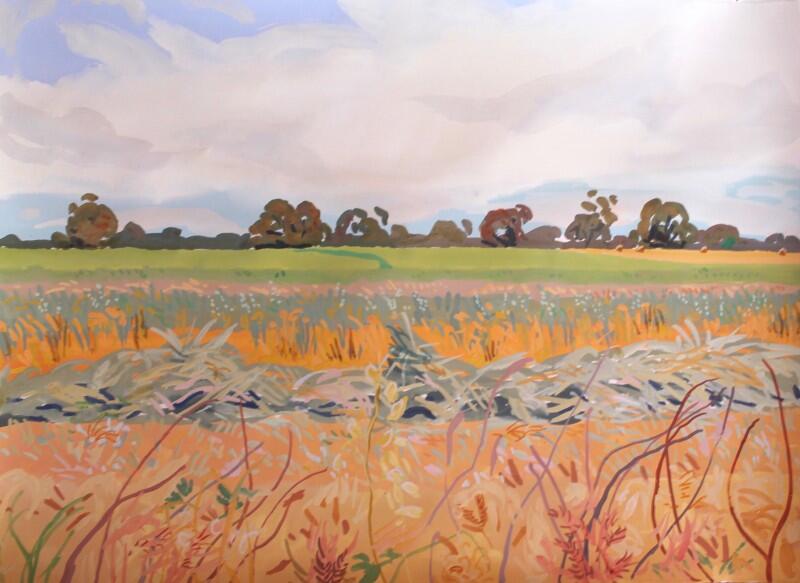
About me
Additionally, I have made work over the last few years at residencies in the ACT and NSW.
Working on site I seek to convey the experiential with directness and immediacy. My response comprises a blend of the observed and imagined. I view the organic relationship between looking and mark making as intrinsic to the meaning of my work -- integrated expressions of a direct and tactile engagement with place. I want the viewer to experience a sense of immersion by physically engaging in the activity of viewing that mirrors my own physical engagement when making the work.
I regularly go out painting with my artist wife Elizabeth Nelson. While we make our work individually, there is an ongoing collaborative aspect to what we do – in terms of where we paint, the ongoing feedback and support we provide to each other, and our exhibiting together a number of times.
While my website catalogues my work into several subjects, I am essentially concerned with two kinds of landscape – the bush and public gardens. The former constitutes what lies beyond the towns – a hybrid world of the native and the introduced - while the latter are within the towns and are a delightful legacy of our European heritage.
For me there can be a certain strangeness about the bush – odd looking plants and grasses, lumpish rocks, contorted trees and branches. Yet there is beauty and poetry to be seen in abundance too, so that both the surreal and delight inform my response to this landscape. Mostly this response takes the form of large scaled works on paper making use of watercolour, and often incorporating mixed media.
My work in public gardens investigates two sites: the Nymphaea – a lake in the Melbourne Botanical Gardens filled with water lilies - and the Castlemaine Botanical Gardens, mostly a woodland featuring oaks and elms, and including a lake encircled by willows and flowering plants. At the Nymphaea I make multi-sheet works on paper; at the Castlemaine Botanical Gardens I alternate multi-sheet works on paper with smallish sized oils made in one session.
This direct approach lends a patterning to my work. With my work on paper the elements of the landscape are codified in a pictorial language that is as much symbolic and abstract as a description of what is seen. For example, I may convey the sky in broad transparent washes of watercolour, the granular quality of rocks by a multitude of small dots, and varied grasses and foliage by thin, straight or curved lines of differing lengths and in differing configurations. When working in oils on canvas I put a greater emphasis on weight and form so that trees, for example, are given weight and solidity. While I emphasize the particularity of nature, I also seek to bring the disparate elements of landscape together in an overarching harmonious whole.
So far as mood is concerned, my work ranges from a sense of the cosmic and surreal, and a contrast between bold mark making and delicate washes (my work on paper), to a romantic and at times dramatic contrast of light and dark (most evident in my work in oils).
When making my work my painting develops as a jig saw like assemblage that alternates between detail and large areas. In tandem with my looking, the painting progresses in a haphazard and non-linear way. This back and forth process can necessitate painting around areas of detail already present in the painting. It is a dialectical way of proceeding that can bring distance up to the picture plane and serves to equalize positive and negative shapes.
My use of colour, variously naturalistic, heightened, and invented is used to structure spatial relations, convey sensual delight in the landscape, and to convey light and luminosity. Space is declared experientially and is multidirectional: there is no singular perspective or singular moment on display, as would be captured in a photograph. There is, in all of this, an affinity with the work of the European Post Impressionists, British inter-war surrealists such as Paul Nash, and the plein-air landscapes of Albert Namatjira and David Hockney.
I believe one of the important functions of art is to inspire and give pleasure, particularly where the genre of landscape is concerned. My work is very much concerned with beauty, which is a quality rather than an issue. Beauty has, I believe, a universal appeal and significance. Beauty gives meaning and value to people’s lives, and encourages an engagement with the world around us. Beauty has a broad application to how we experience life itself.
